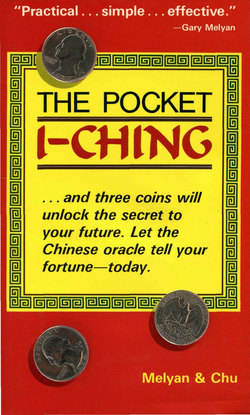Читать книгу Pocket I-Ching - Gary G. Melyan - Страница 6
ОглавлениеPreface
THE GROWING popularity of the I-Ching (Book of Changes) in the West is evidence that rational man, the product of Western tradition, is seeking consolation in ever-increasing numbers in this ancient Chinese oracle book. There are in existence several very good translations and interpretations of this work of philosophy and divination. Nonetheless, the problem of how to interpret and explain the often mysterious and obscure comments that accompany the hexagrams remains.
Those who have seriously studied the I -Ching and its tradition can arrive at their own conclusions about what the hexagrams mean in terms of questions directed at them. But those who have not had time or training to become familiar with the intricacies of the I-Ching frequently find consulting the oracle a difficult task, one easily leading to a misunderstanding of what the I-Ching says. It is to fill the need for a practical and simple introduction to consulting the I-Ching as an oracle that Dr. Wen-kuang Chu and I have collaborated on this text.
Our goal is to open up the use of the I-Ching as an oracle to the non-specialist, giving him a modern context in which to ask his questions. We also hope that we can introduce to readers some of the implications of this influential philosophical text. The heart of our endeavor is Part Three where we have provided twenty broad categories of human concern. The reader is encouraged to formulate specific questions and address them to these categories following instructions given in "How to Consult the Oracle" of Part One. We have arbitrarily limited our scope to the 20 categories, providing some background information about the hexagrams to enable the reader to determine answers for questions that do not fall within this scope.
That the I-Ching is an oracle book of extraordinary effectiveness is something that the Chinese take for granted. The idea that casting yarrow stalks or coins can lead to the formation of groups of lines which in turn open up an understanding of both present and future circumstances is something difficult for the Western mind to accept. We have not tried to explain just why the key to cosmic influences is hidden in the hexagrams. We can do no more than offer our interpretation of the hexagrams, hoping that use of our text in divination will make believers out of skeptics.
People in many Oriental communities use handbooks similar to this one and have found their use very effective. We hope that our readers will also find this approach to the I-Ching helpful in their daily lives.
We are very grateful to Liu Ta-yung for the calligraphy that introduces each trigram and hexagram.
—GARY G. MELYAN
